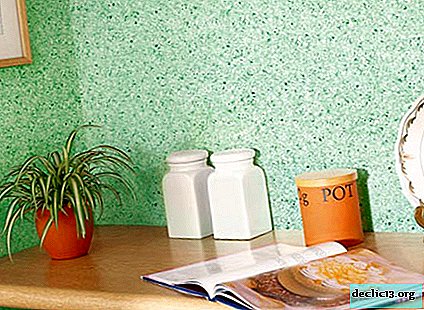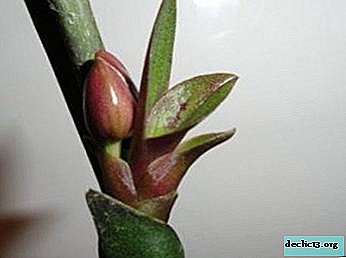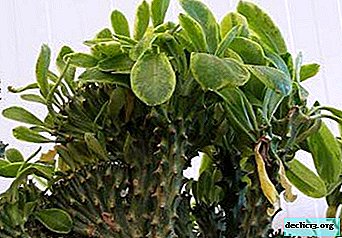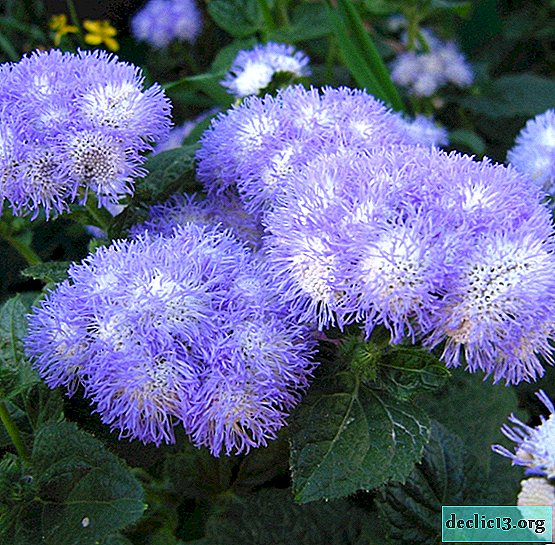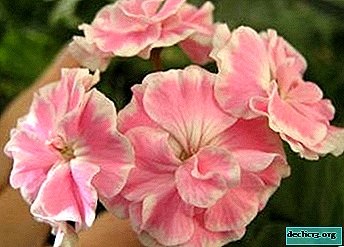All the subtleties of the correct transplantation of Decembrist at home

Decembrist can not be called too demanding plants. However, one should not neglect the rules for caring for him. This also applies to transplants.
Untimely or incorrectly performed procedure harms the Schlumberger and prevents flowering.
Therefore, it is important not only to know how to transplant the Decembrist, but also to choose the most favorable moment for these manipulations. Is it possible to transplant a flowering plant in winter or is it better to choose a different time? How to act? We will tell you step by step about the transplant procedure and show a photo.
When do transplants take place?
The first transplant of zigocactus is carried out after purchase. In the store, the plants are contained in the transport soil. Such land is not suitable for the further cultivation of schlumbergera and can lead to its withering. Immediately after the Schlumbergera purchased in the store fades, it must be transplanted into a nutrient substrate.
Further transplants are needed to provide the root system with new space, as well as to update the old soil. The best period for the procedure is spring, after flowering is complete. By this time, the soil in the pot is depleted, and its renewal will be very useful for the faded zigocactus.
 Flowering begins in December and lasts about two months, so in winter you cannot transplant Schlumberger. In summer and autumn, the procedure is also not recommended.
Flowering begins in December and lasts about two months, so in winter you cannot transplant Schlumberger. In summer and autumn, the procedure is also not recommended.
Transplanting is a big stress for the plant. For the Decembrist to successfully take root in a new place, a long period of favorable conditions is required.
After the spring transplant, Schlumbergera will have about five to six months in reserve, during which time she will receive heat and light in the required quantity. This will give the plant enough time to recover before the next winter and gain strength for new flowering.
Attention! Incorrect or untimely transplantation can lead to leaf falling.Is it possible to carry out the procedure during flowering?
During the flowering period, Schlumberger is extremely sensitive to even minor changes and reacts to them by dropping buds. Transplanting zygocactus at this time is not recommended.
In addition, after transplantation, all plants adapt to new conditions. Therefore, the procedure immediately before flowering should not be. If there is an urgent need, it is better to transplant Schlumberger no less than two months before the formation of buds.
In an extreme case, when it is urgent to save the plant, for example, with a fungal disease or rotting of the roots, it is permissible to carry out the procedure by sacrificing flowers.
How often can this be done?
The frequency of transplantation depends on the age of the Decembrist. Very young specimens must be transplanted annually, adults - once every three years, large plants - every five years.
A healthy zigocactus does not need more frequent transplants. A plant with a gentle root system should not be subjected to additional stress..
What kind of earth and pot is needed?
Schlumbergera is an epiphytic plant with surface roots, the natural habitat of which are the tropics. This should be considered when choosing a pot and soil.
Decembrist prefers a substrate having the following characteristics:
 loose, light, well permeable to water;
loose, light, well permeable to water;- slightly acidic - optimal pH from 6.5 to 7.0;
- rich in organic matter.
You can mold the soil yourself at home. It is desirable that the soil for Decembrist contain large inclusions - crushed expanded clay or brick chips, lumps of coal and coarse sand. Nutrient sources should be leaf and turf land. The ratio of baking powder and nutrient mixture is 1: 2. It is necessary to add crushed coal to the soil for the purpose of disinfection. For better water permeability, add some brick chips or ground expanded clay.
It is recommended to use this composition option:
- sheet land - 6 parts;
- humus - 4 parts;
- turf land - 1 part;
- peat - 2 parts;
- sand - 2 parts;
- crushed charcoal - 10%;
- brick chips - 10%.
You can buy a ready-made mixture for cacti and add vermiculite and sand to it.
In the process of planting at the bottom of the pot, it is necessary to create a drainage layer, which should occupy one third of the height. This serves as an excellent prevention of root decay and greatly facilitates the care of Decembrists. Expanded clay balls, pebbles or charcoal are used as drainage.
The superficial roots of the zygocactus do not reach the bottom of the pot. Therefore, the capacity should not be deep. Otherwise, water may linger in the lower part of the pot, which leads to waterlogging of the soil. For transplanting, it is better to choose a wide pot, a couple of centimeters in diameter larger than the previous one.
Important! In a too spacious and wide capacity, Decembrist will increase the root system and green mass. This prevents the formation of buds.Be sure to have one or more drainage holes in the tank. The flowerpot material does not matter.
Detailed step by step instructions
Planned transplantation is usually carried out by transshipment method.. To do this, you must:
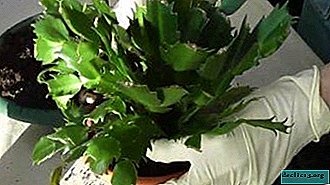 Take a clean dry flowerpot one to two centimeters more than before.
Take a clean dry flowerpot one to two centimeters more than before.- Prepare fresh disinfected soil.
- Prepare a new clean drain. If expanded clay is used from under other cultures, it must be washed, disinfected and dried.
- Fill one third of the pot space with a drainage layer. Tap the flowerpot from the sides and shake lightly so that the drainage is evenly laid.
- Top with a layer of new substrate with a height of at least one centimeter. Flatten.
- Spread newspapers on the floor.
- Shallowly loosen the soil along the edges of the flowerpot in which the Decembrist grows.
- Holding the base of the trunk and turning the Schlumberger to the floor, carefully remove the plant from the old pot.
- Gently shake the roots off the ground. You can remove only the part of the soil that is separated without effort.
- In case the root system is healthy, put it together with an earthen lump in a new flowerpot.
- Keeping the Schlumberger weight in the center of the pot, fill the container with fresh substrate. When the roots are completely covered by the earth, turn the pot several times, tapping lightly on its side walls so that the soil fills all the voids. It is important to arrange the plant evenly, without distortions. This will allow the crown to form evenly.
- Tamp the soil lightly. Do not tighten strongly, otherwise fragile roots can be damaged.
- When the earth settles after watering, add a little more substrate. No need to fill the pot to the brim.
- Put the pot with the plant in a permanent place.
After the purchase or in the case of decay of the root system of the plant, the procedure is complicated:
- After removing the Decembrist from the old flowerpot, it is necessary to carefully shake off the roots of the old substrate from the roots.
- Inspect the root system. Remove unhealthy areas with a sterile instrument.
- Rinse the roots with warm water and dry.
- Sprinkle slices with crushed coal.
- Then follow the same steps as for a planned transplant.
Watch the video on how to transplant Decembrist:
Photo
In the photo below you can see the main points of zigocactus transplant.



How to feed Schlumberger?
In the process of transplanting, the following types of fertilizers can be introduced into the soil mixture for Schlumbergera:
- Humus. It is not only rich in nutrients, but also holds these components in the root zone. Humus particles retain their elasticity, so that between them there are air gaps for breathing the root system.
- Wood ash. Serves as a natural mineral fertilizer. Such top dressing contains a large amount of potassium and phosphorus.
- Rotten compost. It will significantly increase flowering.
- Bone flour. It is rich in phosphorus, responsible for root formation and the formation of buds.
Here you can find out how to feed the Schlumbergera and how to care for it so that the plant blooms.
The nuances of subsequent flower care
About two weeks after the procedure, the Decembrist will experience stress. Therefore, the care of the plant during this period must be approached very responsibly. Within three to four days after transplantation, do not water the Schlumberger. It is required to spray it often and plentifully. Then smoothly resume watering.
Attention! After the transplant, the Decembrist must be given rest. Place the pot in a cool room with an air temperature of 13 - 15 ° C. Watering to a minimum (we talked about how to properly water the Decembrist so that it flourishes and is healthy, here). Stop feeding completely. Provide zygocactus dormancy for one to two months.When the Decembrist has taken root, pinch each shoot in order to bookmark additional branches (about whether it is possible to trim the Decembrist and how to do it at home, read here). This contributes to the formation of a large number of buds.
Schlumbergera transplantation is not particularly difficult. The main thing is to follow the basic rules for caring for the Decembrist and carefully handle the plant. It is imperative to determine the time that is right for the procedure. Transplantation should not contradict the life cycle of zigocactus. The most favorable period for the event is the beginning of spring, after the end of flowering.

 loose, light, well permeable to water;
loose, light, well permeable to water; Take a clean dry flowerpot one to two centimeters more than before.
Take a clean dry flowerpot one to two centimeters more than before.